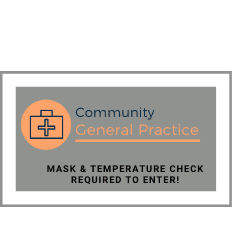Generally, to find cancer diagnoses declining would be good news, but this decline is due to fewer people willing to risk COVID-19 for a doctor visit. Six common cancers and their diagnoses were studied: breast, colorectal, lung, pancreatic, gastric and esophageal. A 46% decrease was found between March 1 and April 18 – the same time period the public was warned to stay away from doctors’ offices and emergency departments unless it was a true emergency.

Since that time, safety procedures were put in place that lessened worry about these visits. Even though the warnings about visits are much fewer, the initial fear of visits – leading to diagnoses – are still less than pre-Pandemic.
How was the study conducted?
Quest analyzed tests ordered by doctors who entered the code for ‘new cancer diagnosis’. They began with a baseline covering January 2019 through February 2020. In the following seven weeks, March 1 through April 18, the mean weekly number for all six types of cancer diagnoses decreased 46.4% for those newly diagnosed with cancer. Quest found that in the baseline and pandemic studies, women with a mean age of 66 comprised 75% of their patients.
What does cancer diagnoses declining mean to patients?
Ned Sharpless, director of the National Cancer Institiute, stated this delay of diagnoses could mean 10,000 unnecessary deaths from breast and colorectal cancer over the next ten years. He also said, “We’re very worried about the consequences of … delaying therapy on our patients. We can’t delay cancer care forever.” This could be trading the COVID-19 crisis for a late cancer diagnosis crisis. The United States now has 163, 651 deaths from COVID-19 as of August 11, 2020. This is a huge number.
Other effects of COVID-19
The purpose of the National Syndromic Surveillance Program (NSSP) is to collect electronic health data in real time. They found that visits to emergency departments declined by 42% comparing March 31 – April 27, 2019 to March 29 – April 25, 2020. This data covered visits from a subset of hospitals in 47 states. This led to acquiring data from approximately 73% of emergency department visits in the United States.
This demonstrates that patients afraid of going to the doctor’s office, also were slow to go to the emergency room. A person with arm or chest pain may decide it’s better to wait and see what happens than go to the emergency room, leading to a potential heart attack. Visits for nonspecific chest pain decreased by over 24,000 during the early pandemic.
They may try to ignore a severe headache and treat with OTC remedies when it could be a treatable stroke. They also may hesitate to go with abdominal pain, musculoskeletal pain, high blood pressure, and nausea and vomiting, respiratory infections – as well as sprains and strains. While some of these might be minor, others could lead to serious illness or death.
Those who use emergency departments as their primary healthcare – usually because of lack of access to primary care – may be significantly affected, leading to avoidance of their normal safety net.
What to do?
Authorities, and the media, must stress doctor visits, regular checkups and needed tests are still necessary to stop the number of cancer diagnoses declining. They must also reassure the public that health facilities have guidelines in place for monitoring entrance to facilities, mandatory face masks, and social distancing. All facilities need frequent access to approved hand sanitizers and hand washing stations. Good use of phone and video calls for triage can quickly assess emergency situations and limit crowds. For those afraid that telemedicine may not be covered with their insurance, check with providers. Currently, because of the emergency status, most insurances are paying as if in-person. In most cases, that also includes Medicare.
While COVID-19 is serious and can be deadly, so can ignoring early detection of cancer and other health risks.
Cancer diagnoses declining is the canary in the mine warning everyone that this is not a time to neglect health care.
